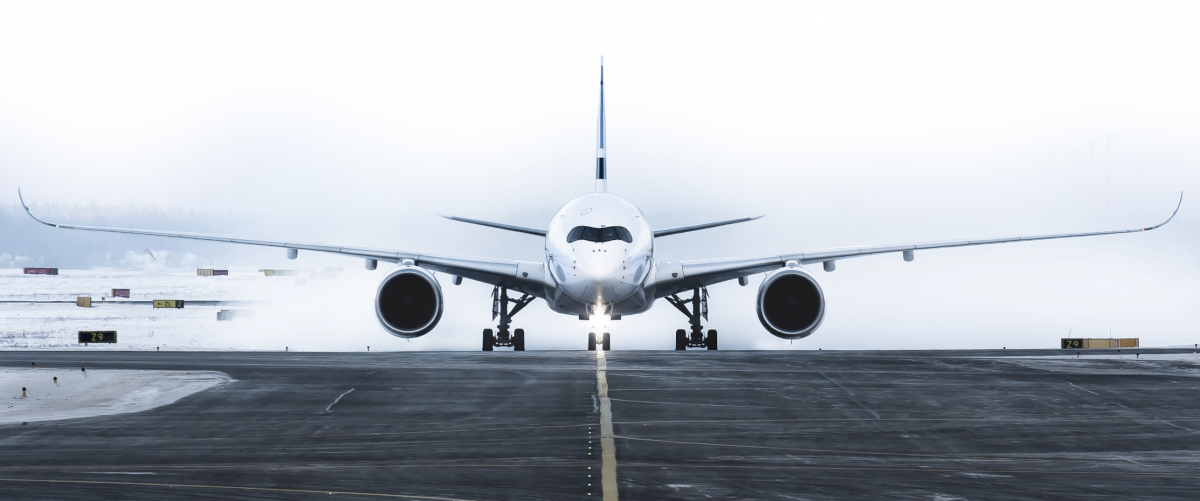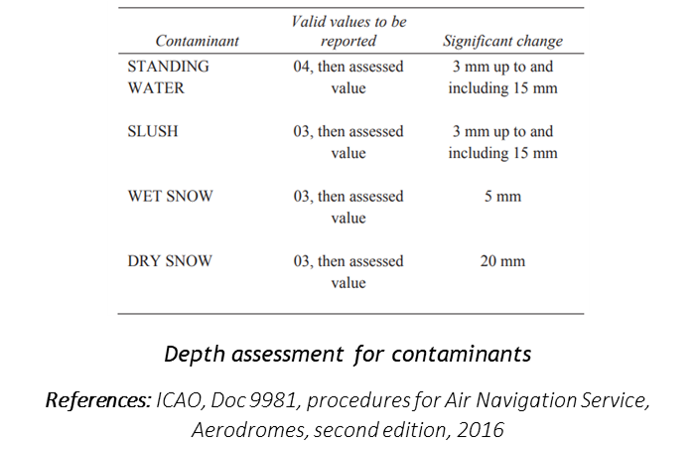
In the previous posts we discussed different aspects of the Global Reporting Format (GRF) that should be considered in the assessment of runway conditions. We discussed that the inspector has to take into account several inputs when he/she is assessing one runway third. However, certain requirements (hereafter called triggers) have been set in GRF that urge reassessment of the runway. Reassessment means the runway inspector must visit the runway, assess the runway and issue a new SNOWTAM, if required. In this post, we explain the GRF requirements when runway should be reassessed.
What are the regulatory criteria that triggers for reassessment of runway conditions?
Beginning of precipitation: The basic principal is that the reassessment should be carried out if the inspector assumes that the runway condition code (RWYCC) is going to be changed. This situation occurs at the beginning of precipitation, when runway third was previously reported to be dry, or the precipitation changes its form from water to snow or vice versa.
Contaminant type changes: Reassessment is required, when the contaminant type changes on the runway. This often means, that also the runway condition code will change. It is mandatory to give the up-to-date contaminant information to the pilot.
Contaminant depth passes 3mm: According to Runway Condition Assessment Matrix (RCAM) contaminant depth 3mm is the limit value for different runway condition code classes. When contaminant depth passes 3mm, it requires immediate reassessment. Contaminant depth below 3mm normally represents runway condition code #5. Depth over 3 mm reflects runway condition codes #3 or #2 depending on the contaminant type.
Temperature passes -15°C: If compact snow has been reported and the temperature is passing -15 °C (either increasing or decreasing), this means that the runway condition code changes from #4 to #3 and vice versa in either case, it requires reassessment.
Contaminant depth passes regulatory step: GRF regulations set regulatory steps (see table below), when to reassess the runway condition. These steps are compared to the previous reported contaminant depth.

Temperature <=3°C and dew point spread <=3°C: Important and fairly common situation is, when risk for frost build up or runway freezing is imminent. To cover this risk, regulations state that when temperature is equal or below 3°C and the dew point spread compared to the temperature is equal or below 3°C, an immediate reassessment is required. However, in addition to immediate assessment, a periodic reassessment should be also triggered as long as the risk exists.
AIREP below last reported RWYCC: When aircraft is reporting any estimate of runway braking action and this estimate differs from the last reported runway condition value, an immediate reassessment should be carried out. This basic rule is described in two different specific cases in the GRF regulations: aircraft reports braking action “less than poor” equal to runway condition code #0, an immediate reassessment is required. Using common sense: of course, only if a runway condition code better than #0 was previously reported. The regulations also state that if two consecutive landing aircraft will report braking action “poor” equal to runway condition #1 and again, if the last reported runway condition code was higher than #1, an immediate reassessment is required. These rules can be interpreted, that if the aircraft report differs from the last reported value, this should trigger a reassessment.
After chemical treatment or use of sand: Another trigger for reassessment is after: the use of chemicals, or so called SPWR treatment on the runway (i.e. Specially Prepared Winter Runway). The duration of these treatments is limited. An airport should define a cycle, when to reassess the runway condition. This cycle can mean periodic reassessment, number of operations etc.
After RWYCC-UPGRADE: The same rule applies if the runway condition code upgrade has been applied. The upgrade is not valid forever and a periodic cycle should be declared to reassess the runway to determine whether the upgrade is still in valid or not.
What are the other criteria that triggers for reassessment of runway conditions?
There are also other criteria that can trigger the reassessment of runway conditions, and are not regulatory, but they are still important triggers:
Contaminant depth passes airplanes thin-thick limit: If the contaminant depth on the runway passes the airplanes thin-thick performance limit, it is quite obvious and important to publish a new SNOWTAM and runway condition report, since this has dramatic effect on airplane performance calculation and V1 speed.
Airplane RWYCC differs from last reported RWYCC: Already aircrafts can behave as a sensor. During landing, some aircrafts are able to measure and calculate out the runway condition code in case the aircraft is sensing a friction limited braking. If this code differs from the last reported runway condition code, this should trigger an immediate reassessment or maintenance action.
Global Runway Reporter (GRR) application, Alert module:
All regulatory and non-regulatory triggers for reassessment of runway conditions can effectively be handled by using Global Runway Reporter Alert application. Alert module gives targeted warnings when new report needs to be done. Alert module reacts to aircraft and weather sensor data (if available) and compared this data to the last reported runway status. The application improves cost efficiency due to better timing of maintenance and assessments efforts.
Hopefully, this topic helped you to get a better understanding about GRF regulatory triggers for reassessment of runway conditions. Do not hesitate to contact us to discuss how to implement GRF at your airport.

